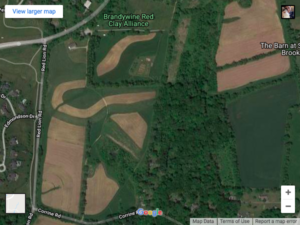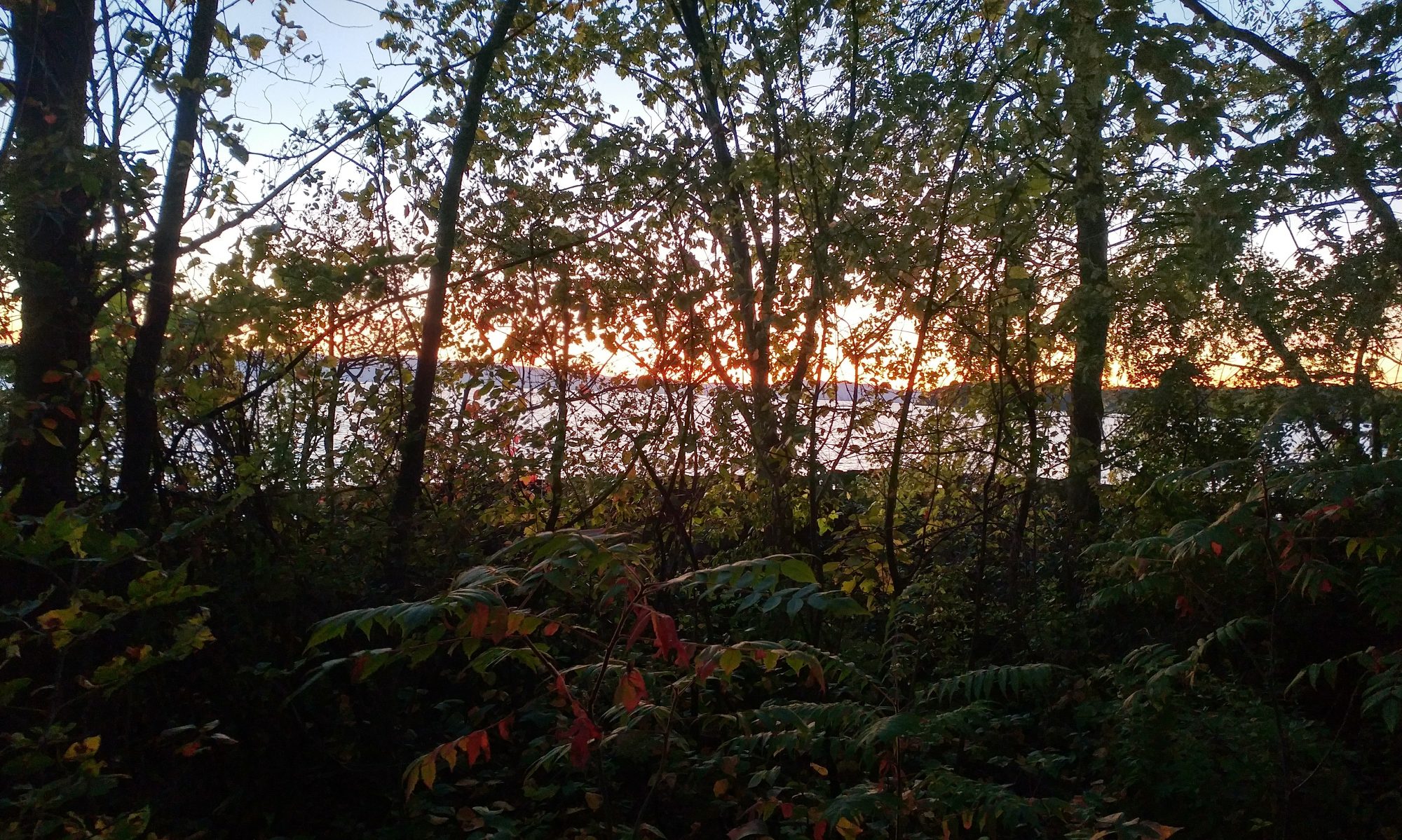I do not feel as though I am apart of my phenology place; I am merely a visitor enjoying what nature and the Earth are offering. I have no connection here that would warrant me being part of this place. But I do feel an incredible bond to it because I have investigated it so closely.
Culture and Nature
Here, culture and nature definitely intertwine in many ways. Most symbolically, perhaps, is that my phenology site is growing upon a land mass that was built by man for industrial purposes. But, nature has reclaimed it as its own and has made it even better. Culture connects to nature every day here. Those enjoying the waterfront or walking their dog use this area to connect more closely to the land because of this little patch of woods. Finally, the culture of the area shows what beauty it can make through an impromptu art gallery. There was a dumping of large rocks here at one point and these large flat rocks have become a hub for stunning graffiti art.
May Phenological Changes
On my final visit to my phenology spot, it is finally becoming green again. The grass is beginning to poke through the leaf litter and the fields are as green as ever. The wildflowers bring a vibrancy back to this place that the snow and cold had taken away. The trees are just beginning to grow back their canopies and it is beautiful to see life starting once more.
Edge Effect
There are multiple edges in my phenology spot. It is basically a relatively small square with two sides bordered by the lake, one side next to the bike path, and the final side bordering a field. This produces three fairly unique edge habitats for various organisms. Along the lake, the tall trees act as bird habitat while providing them with a close proximity to hunting grounds in the lake. Along the other two sides, because of the high human activity, I do not think they act as good habitat for many animals. But, the increased sunlight provides habitat for unique plant species. It appears that the area is just too small to truly support any forest interior species. At the very most it could act as a resisting ground for traveling interior species.
Phenology Sketch
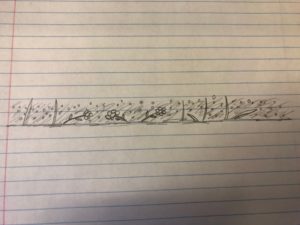
A representative sketch of the cross-section of the sheet of ice that covered the ground. Clearly, there are some blades of grass sticking out of this layer but much of the grass and the delicate wildflowers have been buried beneath.
April Phenological Changes
During my visit to my phenology place, I feel that I did not find an accurate phenological account of April because of the coating of sleet on the ground. Any sort of amphibian sign was covered and I fear that the amphibians may have been negatively affected by this icey precipitate. Also, because most of the leaf litter was covered by a sheet of ice, the newly blooming wildflowers were covered and most likely damaged. But, earlier in the week, throughout Burlington flowers in beds as well as the occasional wildflower were beginning to poke out of the ground.
Woody Plants of the Myrick Conservation Center
Most of the forest had a fairly healthy mixture of various deciduous trees with scattered evergreen stands. There was a large amount of American Beech trees but there were also many Maples and Oaks scattered throughout the wooded areas. One notable tree in this park is the American Sycamore, they are relatively prevalent in my area and they are stunningly beautiful but Vermont tends to lack them because they are just north of their habitable range. The two largest evergreen stands that I found were a Cedar and a White Pine stand. The Cedar stand was in a low-lying wet area while the pines sat atop an otherwise grassy hill.
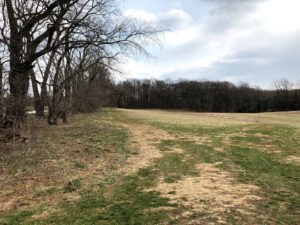

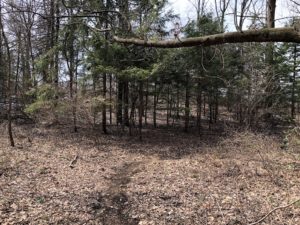
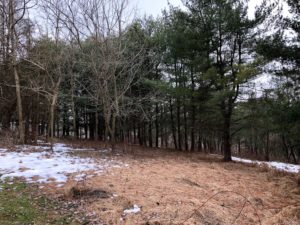
Wildlife of the Myrick Conservation Center
The edge habitat provided by the mixing of agricultural lands and forests provides a fantastic habitat for many bird species. The conservation center also provides many different types of birdhouses in many different places to cater to these feathered friends. Within the first few steps in the park, I saw many robbins, a few red-winged blackbirds, many blue jays, and a pileated woodpecker flew maybe 10 feet in front of my face. I watched the woodpecker investigate multiple trees before I lost it in the brush. As I went deeper into the woods, there were fewer birds other than a few large crows circling overhead. But, I did find a stunning blue jay feather again on the edge of a different patch of forest. There were deer tracks crisscrossing throughout the property and marks on the signs from where they have been chewing. The only other mammal that I saw was a squirrel and the many dog tracks made discerning any other tracks in the mud difficult. I found a groundhog hole as well with tracks on either side that were difficult to identify. But, I did find a scene of two deer that had been killed and were in the process of being eaten(WARNING: fairly gruesome image). It appeared to be a fox or coyote den but based on my research, neither of these animals are known to take full adult whitetails back to their dens. Regardless it was very interesting to see! There were also smaller tufts of fur throughout the park.

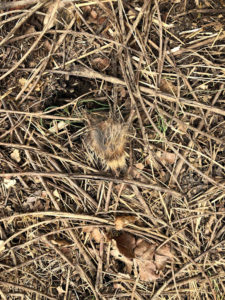
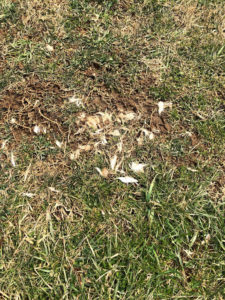
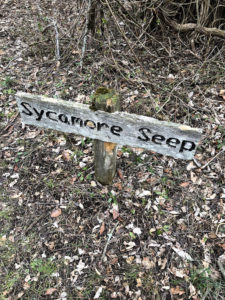
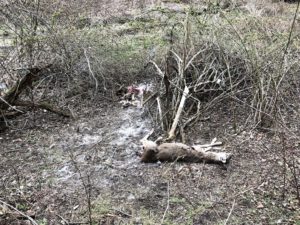
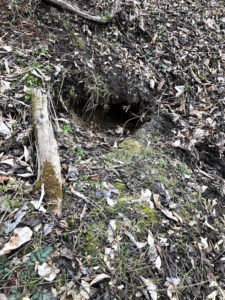
Natural History of Myrick Conservation Center
Long ago, this area was completely forested but it was clear-cut for agricultural uses, namely corn and other staple crops. But, this area was bought by an early conservation group that was concerned by the dumping polluting the Brandywine Creek. This group then merged with a group protecting the neighboring Red Clay Creek Watershed and the Brandywine Red Clay Alliance was formed. Today this area is frequented by dog walkers, horse riders (with large steeple chases held relatively often), cross-country skiers, an environmental education center, and a nature-based summer camp (with which I am employed as a counselor in the summers). The property has a very long history with Quaker farmers with a barn and silo dating back to the early 1800s, a spring house from the Revolutionary War period, and a Penn Oak that was growing at the time William Penn settled Pennsylvania in 1681. Sadly, this behemoth fell over in 2016 at more than 25 feet around and about 150 feet tall.
http://www.dailylocal.com/general-news/20160707/giant-penn-oak-dies-in-pocopson
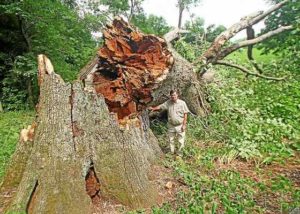


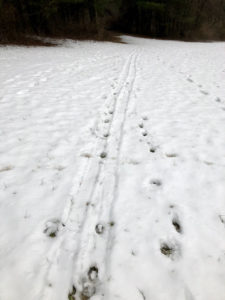
Map of my Home Place
Here is a map of the Myrick Conservation Center. There is a mixture of forested areas and agricultural lands that are rented out throughout the property. On top of this, there is a stream that runs through the middle creating wetlands and there is a small pond toward the south end of the property. Unfortunately, I was unable to embed the map so here is a screenshot of the area.
